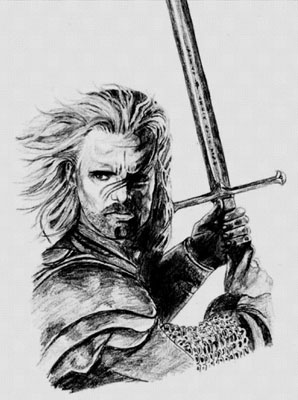All Nonfiction
- Bullying
- Books
- Academic
- Author Interviews
- Celebrity interviews
- College Articles
- College Essays
- Educator of the Year
- Heroes
- Interviews
- Memoir
- Personal Experience
- Sports
- Travel & Culture
All Opinions
- Bullying
- Current Events / Politics
- Discrimination
- Drugs / Alcohol / Smoking
- Entertainment / Celebrities
- Environment
- Love / Relationships
- Movies / Music / TV
- Pop Culture / Trends
- School / College
- Social Issues / Civics
- Spirituality / Religion
- Sports / Hobbies
All Hot Topics
- Bullying
- Community Service
- Environment
- Health
- Letters to the Editor
- Pride & Prejudice
- What Matters
- Back
Summer Guide
- Program Links
- Program Reviews
- Back
College Guide
- College Links
- College Reviews
- College Essays
- College Articles
- Back
The Hobbit: The Desolation of Smaug
December 13, 2013 was a date I had been looking forward to for a whole year. As an avid Tolkien fan, I was bouncing with excitement for the release of "The Hobbit: The Desolation of Smaug." Despite the mediocrity of the first installment in the three-film enterprise, I had high hopes for the second to be much improved. Perhaps Peter Jackson had listened to the complaints about "An Unexpected Journey" and worked these changes into "The Desolation of Smaug." I walked into the movie theatre expecting more dialogue, less filler, and better character development.
I was satisfied-partially. "The Desolation of Smaug" was, overall, a huge step up from "An Unexpected Journey." I didn't find myself as bored during the movie as I did with the first. I also got to meet a new cast of characters that I had been hyped to see on the big screen ever since I read "The Hobbit" in second grade. Beorn, Thranduil, Bard, the Master of Laketown, and especially Smaug did not disappoint. Benedict Cumberbatch's voice, albeit computer-modified, managed to go from lazy to annoyed to furious without sounding choppy. The inclusion of Bard's children fleshed out his character far beyond Tolkien's writings, and gave me insight into his life and his decisions. As in the first movie, Bilbo and all thirteen of the dwarves wormed their way into my heart with their rough manners, devoted loyalty, and kind souls.
Like all movies, "The Desolation of Smaug" was not without flaws. I have disliked the inclusion of the character of Azog the Defiler since "An Unexpected Journey." He was not originally in the books and detracted from the plot and focus of the movie. I found it hard to believe that one Orc would pursue a band of Dwarves across Middle-earth for unknown reasons. I can understand that the script writers wanted to add a sense of urgency to the Dwarves' quest, but Azog came off as a flop and fake. I also detested the enormous amount of filler included in the movie. I didn't need to see ten minutes of the dwarves and elves shooting orcs, nor was I happy with the long escape scene at the end of the movie. The constant action without a plot or a purpose bored me, quite frankly, and I ended up with a killer headache, despite not having seen the movie in 3-D or IMAX.
Surprisingly, I was pleased with the character of Tauriel. She is another of Peter Jackson's creations, and when I first heard of yet another new character being added, I'll admit that I grumbled my fair share. I feared that she would suffer the same fate as Azog, to become filler that ate up time and bored movie-goers. It was refreshing to watch a strong female character, especially one who could fight as well as Tauriel. After about three minutes of watching Tauriel and Legolas bust orcs left and right, though, my head started spinning and I grew bored. It was simply filler that helped bump up the 2 hour 45 minute long movie. Tauriel's relationship with Legolas was interesting, and even more so was the apparent romance between Kili and Tauriel. Despite the fact that the romance was filler, too, I thought that the natural chemistry between Aidan Turner and Evangeline Lilly made it work. Kili's cheeky lines and Tauriel's equally biting remarks added lightness to the movie. I would have appreciated a tad less emphasis on the love, though. Throughout the movie, it became hard to remember that Bilbo, not Kili, Tauriel, or Legolas, was the main character.
"The Desolation of Smaug," despite it's many imperfections, is not a waste of money. The movie managed to delight and disappoint me in the same minute, and although it didn't live up to its predecessor, "The Lord of the Rings," I can safely say that I enjoyed the experience.

Similar Articles
JOIN THE DISCUSSION
This article has 0 comments.
